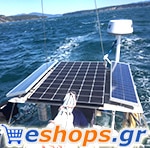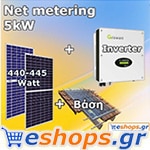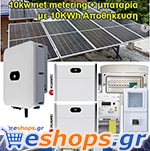Calculation and saving of autonomous solar photovoltaic system
The value of energy efficiency in autonomous photovoltaic systems: A simple approach
Approaching them / Understanding him in a hard way Many studies have been done to determine the cost of electricity production from photovoltaic systems. Calculation and saving of autonomous solar photovoltaic system. Such calculations usually try to compare two quantities, the cost of one KWH of electricity and the investment in a photovoltaic system necessary for the production of KWH of electricity. These studies are important for financial institutions, given the large-scale investments in grid-connected photovoltaic systems. But these financial calculations are complex and involve a number of vague assumptions, so this approach has serious limitations when considered by the typical homeowner.
Because PVs have high capital costs and lower operating costs, corporate financial analysts need to find a way to compare the initial capital cost of a photovoltaic system with the monthly cost of a utility bill. Their method is complicated and requires some representation of the time value of money, or "discount rate". Based on the discount rate, the future cost of electricity, adjusted for projected increases and reduced to "Net Present Value" or NPV is compared to the capital cost of the photovoltaic system. While this is an old hat for corporate accountants, it often does not seem to make sense to the average homeowner. Companies often choose the interest rate on their loans as the discount rate. But if you can not get a bank to finance a home offline,
Our approach / The easy way What we present here is a simpler and more direct method of calculating the cost of photovoltaics required to generate an additional KWH / day versus the cost of maintaining this KWH / day using energy efficient home appliances. In a standalone system, calculating the cost of a KWH does not give the homeowner much useful information, especially when considering the many assumptions made in that calculation. There are no financial decisions that can be easily made based on this estimated cost of a KWH. A measure that would give the homeowner when conservation is a better investment than increased energy production would be more useful.
| How good is a solid fluorescent liner? If you replace a 100 watt bulb with a compact fluorescent 20 watt and the bulb is used 4 hours a day, the energy savings will be 0,32 KWH / day. If you need to expand your system to generate this power, choosing instead to reduce your load by 0,32 KWH / day will save you $ 1794,00. Initially $ 1090,00 and $ 704,00 operating costs for the life of your system. If a compact fluorescent lamp has a lifespan of 10.000 hours and an incandescent lamp, a life of 750 hours, it will take more than 24 years 3,5 solid fluorescents or 46 incandescent bulbs. 3,5 solid fluorescents will cost about 46 incandescent bulbs. |
The cost of production of one KWH / day "CFLs (solid fluorescents) on the roof before photovoltaics on the roof!" is a proverb Home Power. But how much is the performance worth? How much should an off-grid homeowner be willing to invest in more efficient appliances (refrigerator, washer / dryer, lighting, well pumps, etc.) to save a KWH? The answer depends on how much capital is needed to generate off-grid power. We will consider the investment necessary to produce an additional 1 KWH / day from an existing photovoltaic system.
The cost of the photovoltaic system will be divided into two parts, the initial investment and operating costs. The initial cost will include photovoltaic panels, installation material, genuine battery set, etc. Operating costs will include replacement of the battery and the cost of the backup generator during the winter months. The system is sized to provide 1 KWH / day of AC with 4,2 hours of solar radiation, the average annual solar insulation for Arcata, a Northern California coastal city. (Solar insulation is the average amount of usable sunlight available to an unsupervised solar system). It will be assumed that the system increases in size and that the inverter, the charge controller, the loading center,






























